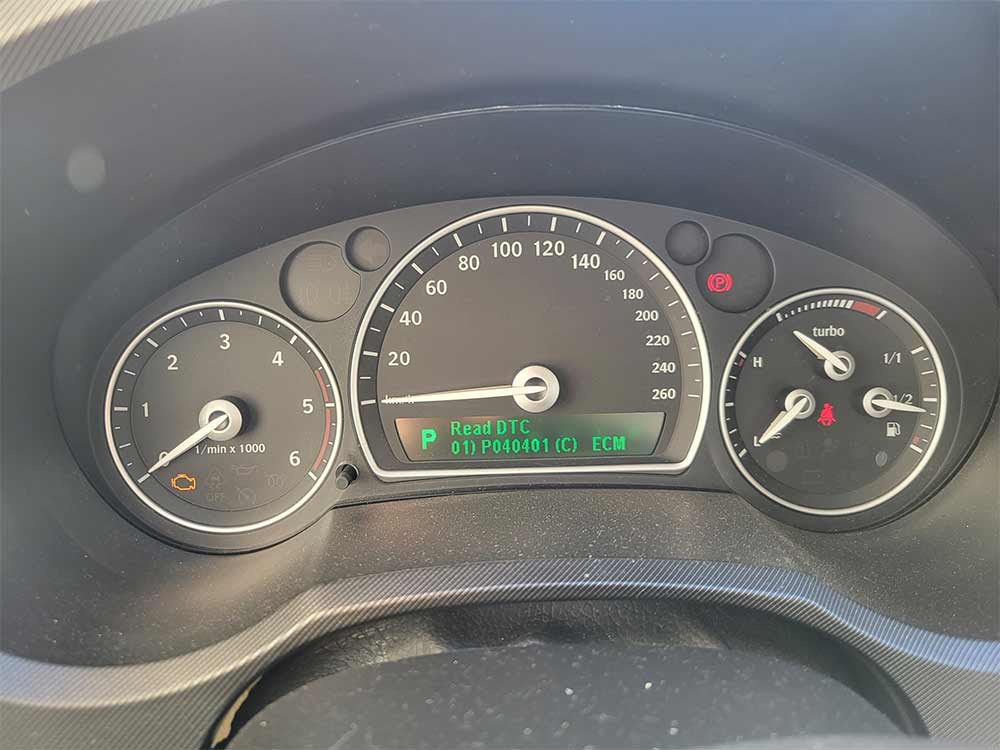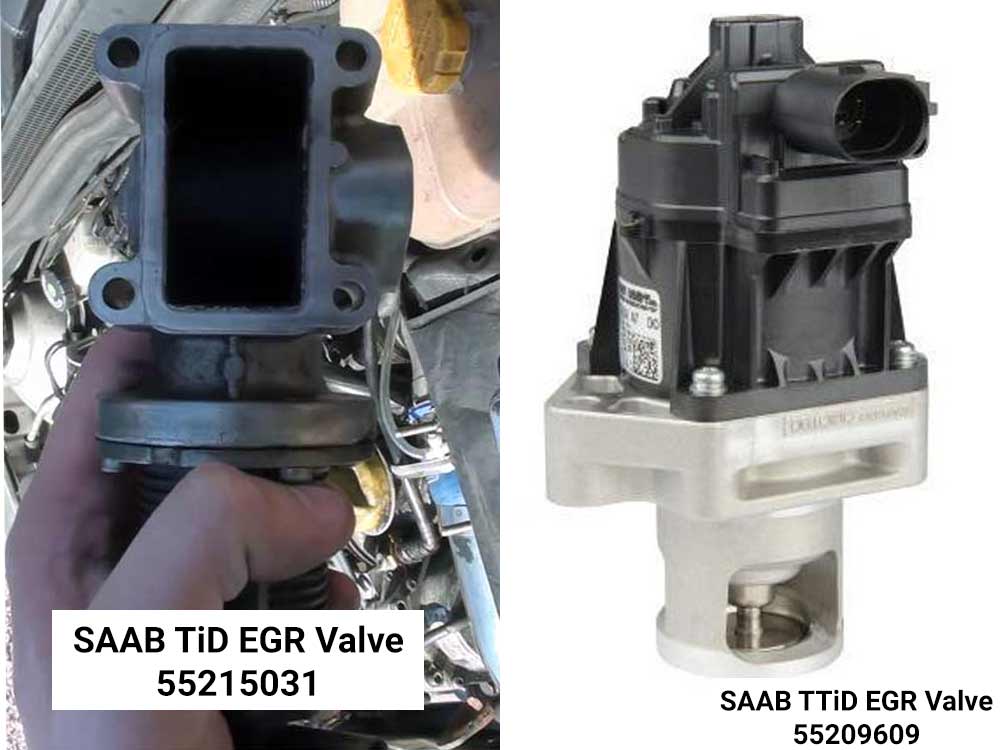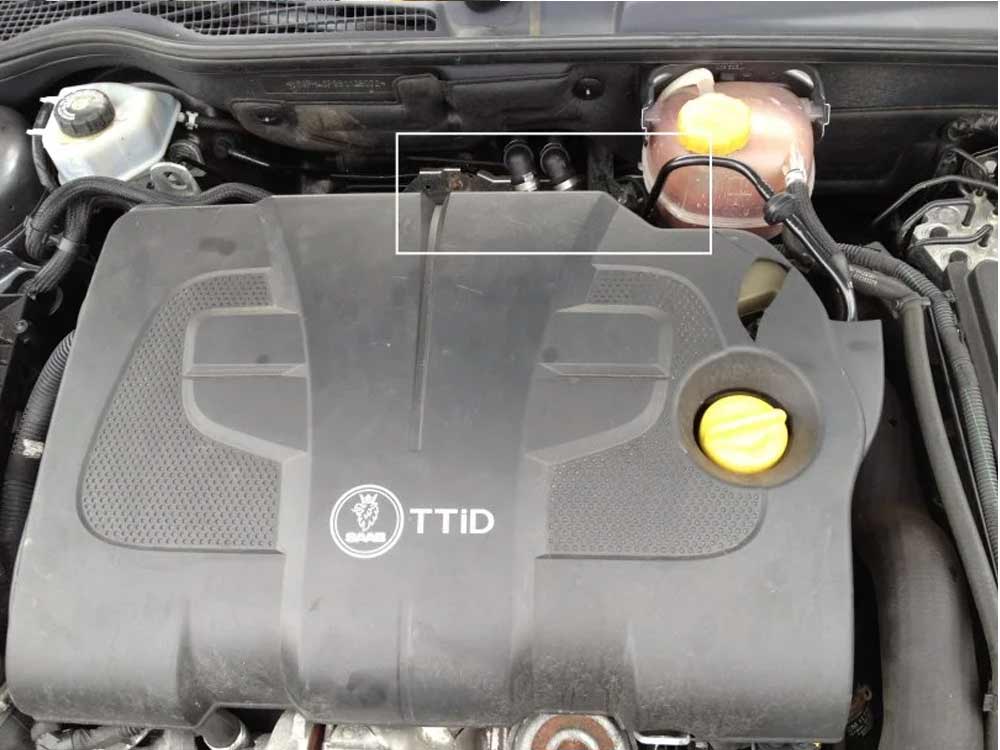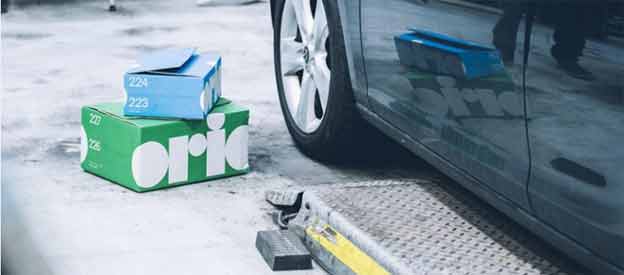Table of Contents
Introduction
The P0401 error code is a notorious headache for Saab 9-3 Diesel (TiD and TTiD) owners. It signifies insufficient EGR (Exhaust Gas Recirculation) flow, a problem that, over time, every diesel engine faces due to the way exhaust gases flow through the system. Over time, carbon deposits build up and eventually clog the EGR valve, preventing it from functioning properly. This problem isn’t just common—it’s inevitable in all modern diesel engines, including those found in Saab’s TiD and TTiD models.

In this article, we’ll walk you through the steps to fix the P0401 code by cleaning the EGR valve. Based on the insightful YouTube video we’re reflecting on, we’ll cover the entire process, from diagnosing the problem to using the eSID3 system to ensure everything is back in working order. Saab’s diesel engines are prone to these issues, but with regular maintenance, you can prevent costly repairs and keep your engine running smoothly.
The Common Issue with Diesel EGR Valves
The blocked EGR valve problem in modern diesel engines like Saab’s TiD and TTiD models stems from the nature of exhaust gas recirculation. Carbon deposits accumulate over time, slowly restricting the movement of the EGR valve. In extreme cases, this results in a complete failure, leading to poor performance and higher emissions. The carbon buildup gradually sticks to the shaft of the mechanical part of the valve, making it difficult for the electric solenoid to open it, causing the P0400401 error.

What’s more frustrating is that most car manufacturers place the EGR valve in hard-to-reach areas, providing no guidance on cleaning it. If they had designed the valve to be more accessible and easy to maintain, many of these issues could be avoided altogether.
Saab’s Diesel: Easier Access to the EGR Valve
Fortunately, Saab’s TiD and TTiD models offer easier access to the EGR valve. Compared to other automakers, Saab made the EGR valve relatively easy to remove and clean with basic tools.
When you pop the hood on either the TiD or TTiD model, the EGR valve is located on the back right-hand side of the engine. On TiD models, it’s held in place by 4 bolts, and on TTiD models, just 2 bolts need to be removed.

For TiD models, disconnect the negative terminal on the battery to avoid short circuits, then remove the four bolts and disconnect the electrical connector to take out the valve. On the TTiD, the process is even easier: two T30 bolts and a connector are all you need to remove.
The Cleaning Process
Once the EGR valve is removed, you’ll likely notice a thick layer of carbon deposits coating the mechanical part of the valve. To make cleaning easier, you can separate the solenoid from the mechanical portion by unscrewing four bolts. While the solenoid can simply be wiped clean with a cloth, the mechanical part requires more attention.
Wear gloves and safety glasses, as Brake Cleaner and a few brushes will be essential to scrub away the carbon buildup. Be patient—this isn’t a quick task. It can take up to 20 minutes to thoroughly clean the valve, as the carbon deposits are quite stubborn.
After cleaning, test the valve’s movement by pressing on the spring-loaded mechanism. The valve should move freely without resistance. This is critical because the solenoid in your Saab constantly adjusts the valve during operation, which is monitored through the eSID3 system.
Monitoring the EGR Valve Using eSID3
One of the advantages of driving a Saab 9-3 TTiD is the ability to use the eSID3 system to monitor the EGR valve in real time. The eSID3 system gives you live data on how much the EGR valve is opening, displayed as a percentage.
Once the cleaned valve is reinstalled, you’ll notice the valve opens and closes depending on engine load. It typically stays at 0% under heavy acceleration but opens up when you ease off the throttle and let the engine RPMs drop. Even when idling, the valve remains partially open. With the eSID3 system, you can verify that your newly cleaned valve is working perfectly.
Results After Cleaning
After the cleaning, you’ll immediately notice a significant improvement in how the engine runs. The Saab 9-3 TTiD will idle more smoothly, accelerate more responsively, and operate more quietly. Another benefit is that the engine will warm up faster to its ideal operating temperature, thanks to the EGR cooler, which circulates coolant more efficiently through the system.
By taking the time to regularly clean the EGR valve, you’ll reduce emissions, improve fuel efficiency, and extend the life of your diesel engine. Preventative maintenance like this goes a long way toward keeping your Saab running at its best.
Regular EGR Maintenance: The Key to Long-Lasting Saab Performance
While the P0401 code and a blocked EGR valve can be a frustrating issue, especially for Saab diesel owners, it’s one that can be easily solved with regular maintenance. Saab’s relatively accessible EGR valve location makes cleaning a straightforward process that any dedicated Saab enthusiast can tackle. With just a few tools and some patience, you can restore your engine’s performance and efficiency, using the eSID3 system to verify that your repair was successful.
Remember, keeping your EGR valve clean is not just about solving an immediate problem—it’s about prolonging the life of your engine and ensuring that your Saab continues to perform as it was designed to. With regular upkeep, your Saab Diesel will remain a joy to drive, free of unnecessary emissions and frustrating error codes.












Still have more to devote to the soot filter